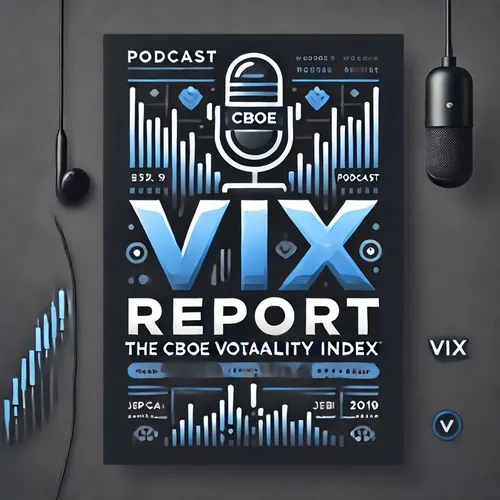Volatility Spike: VIX Jumps 9.91% as Market Jitters Escalate
- Author
- QP-1
- Published
- Mon 26 May 2025
- Episode Link
- https://www.spreaker.com/episode/volatility-spike-vix-jumps-9-91-as-market-jitters-escalate--66278842
As of May 26, 2025, the Cboe Volatility Index (VIX) stands at approximately 22.29, reflecting a notable increase of about 9.91% from its previous level of 20.28. Known as the "fear index," the VIX provides a real-time measure of expected volatility in the S&P 500 Index, capturing investor sentiments and their anticipations of future market fluctuations.
### Key Drivers of Recent Increase
1. **Market Sentiment**: The VIX is acutely responsive to shifts in market sentiment. Recent upticks in market volatility can be attributed to escalating trade tensions and heightened concerns over the fiscal outlook, driving a surge in demand for options as investors seek to hedge against potential downturns. This rise in demand has naturally led to an increase in the VIX Index.
2. **Economic and Geopolitical Impacts**: Comments from influential leaders, notably President Trump, and unexpected economic data releases can significantly sway market dynamics. The recent declines in major stock indexes, such as the S&P 500, Dow Jones Industrial, and Nasdaq 100, further underscore this volatility. Such movements often prompt investor caution, manifesting as increased VIX levels.
3. **Inverse Relationship with Market Performance**: Historically, the VIX Index exhibits an inverse relationship with the S&P 500. When the market enjoys upward momentum, the VIX typically remains subdued. Conversely, pressures on the S&P 500 tend to elevate the VIX. The past few weeks have seen several stock indexes reach new lows, bolstering the VIX's recent ascent.
### Trends and Context
- **Short-Term Volatility Instruments**: The introduction of VIX Weeklys futures has catered to market participants keen on managing short-term volatility positions. These instruments provide avenues for speculation and hedging in response to immediate market changes.
- **Historical Extremes**: The VIX Index has seen its share of fluctuations, from an unprecedented low of 9.14 in November 2017 to a peak of 82.69 during the market turmoil of March 2020. The current reading of 22.29, while significantly higher than the historical low, remains moderate when compared to past extremes.
### Conclusion
The current VIX level and its nearly 10% increase signal growing market caution triggered by ongoing trade issues and economic uncertainties. As a barometer of market fear and instability, the VIX Index serves as an essential tool
